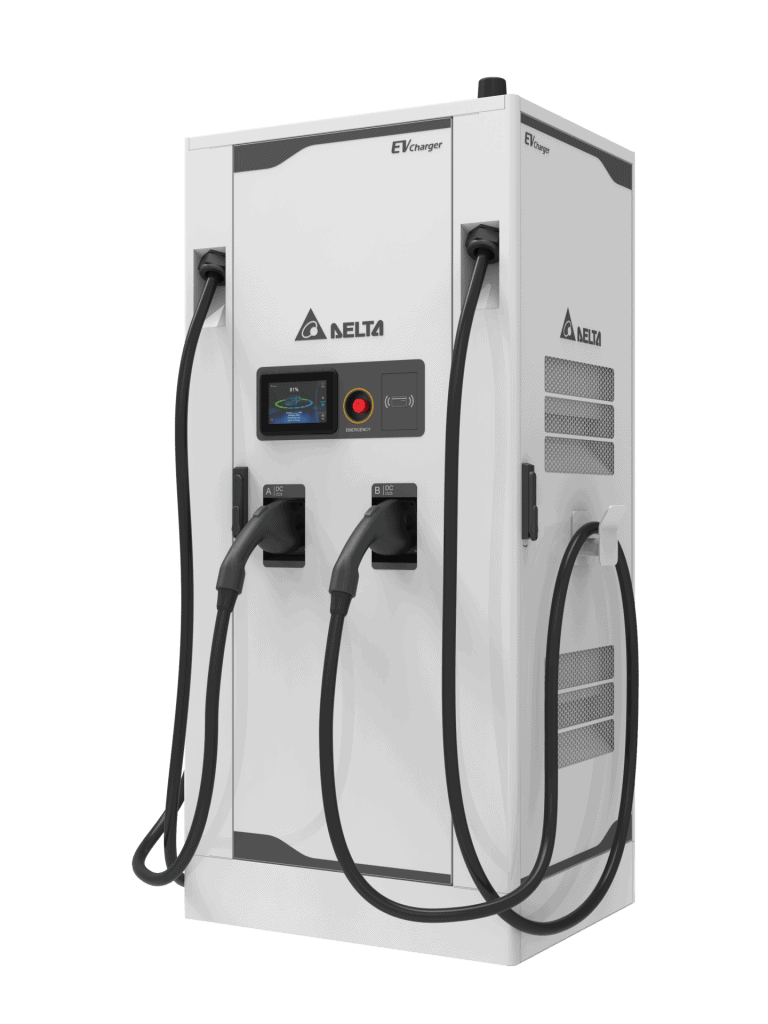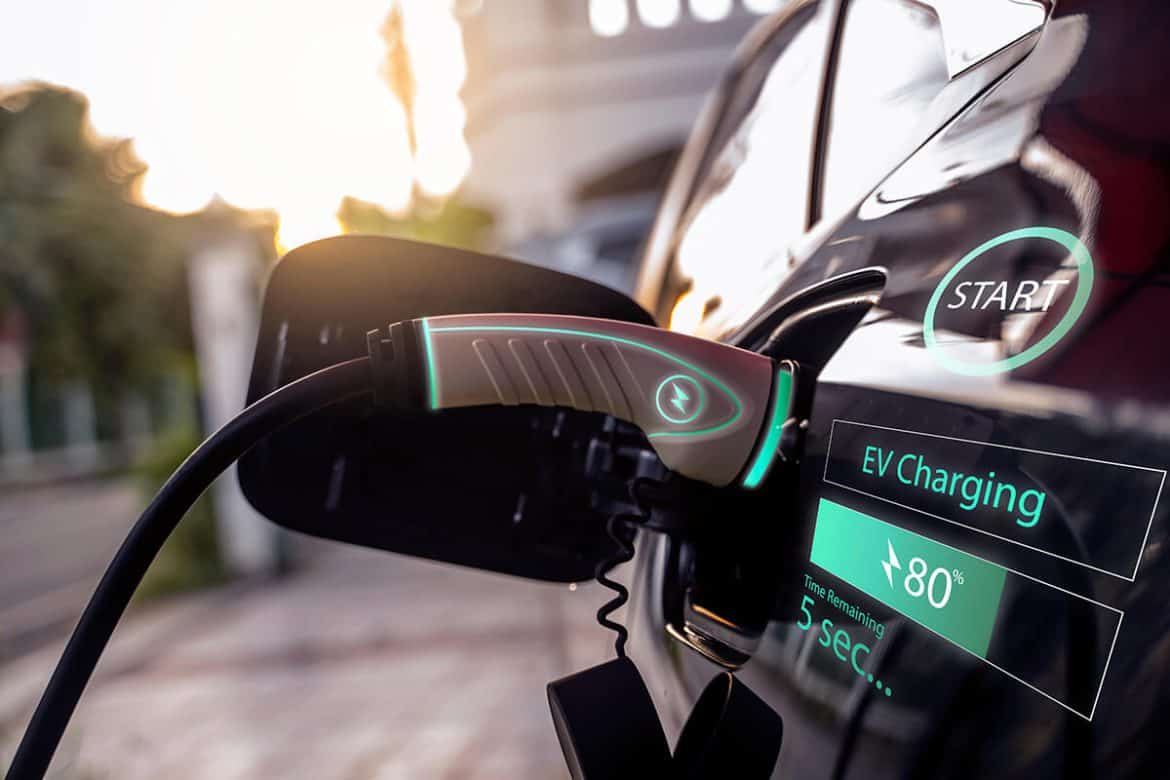As electric vehicles (EVs) become increasingly common, determining how to reduce waiting times for charging is a key for charging station operators to increase their charging service quality and improve turnover rates. In addition to installing rapid chargers, it is ideal for operators to have a single charger with two connectors. However, when both connectors charge simultaneously, it is typical for the charger to evenly distribute the power between two EVs rather than flexibly distribute the power according to the actual needs of each vehicle. Additionally, to ensure battery safety and service life, a limit is placed on the charging speed and amount of power used for charging when EV batteries approach full charge. Thus, when a charger allocates the same power level to one EV that has low charge and another EV that is almost fully charged, there will be idle charging power. This is inefficient for optimizing charger usage.
This problem led to Delta developing a dynamic load distribution technique for smart power deployment, where the central control module of the charger detects the actual power demand of two EVs that are being charged by periodically obtaining information about the remaining charge of the EVs. By comparing the charging needs of two cars, it can smartly deploy the appropriate amount of power to the two connectors through dynamic distributing. Thus, both EVs obtain the optimal service level while reducing the waiting times for the EV owners. For operators, this increases the usage turnover rate of their chargers.
Flexible adjustment of power output based on actual charging demand
As an example, consider a situation where three EVs are charged in sequence. If the Delta City Charger 200 kW DC charger is employed, the following dynamic distribution method will be applied:
- EV A arrives first and is charged with Connector 1 alone. At this time, the charger provides the entire 200 kW of charging power to EV A.
- Next, EV B starts using Connector 2 to charge. Here, the charger initially distributes equal charging power to both EVs (100 kW each) while periodically communicating with the vehicles to detect their charge level.
- Once the charger detects that the battery of EV A is nearly full, it initiates the Delta’s dynamic load distribution technique, thus distributing less power to Connector 1 while increasing the power sent to Connector 2 in order to optimize the charging speed of both EVs.
- After EV A is charged, the charger distributes the entire 200 kW of power to Connector 2 , allowing EV B to charge rapidly by itself.
Once EV A leaves and EV C arrives to use Connector 1, the charger then distributes power to EV B and EV C according to their actual charging needs.
(Learn more about Delta City Charger 200kW)

Future direction: diverse distribution modes for selection
Chargers have seen a gradual increase in power levels from the common 25 and 50 kW of output power to 100, 200, and even 350 kW of output power. Pairing high levels of charging power with Delta’s dynamic load distribution technique effectively eliminates charger inefficiency by appropriately distributing the necessary amount of power to individual EVs. The benefit for EV owners is that it reduces their waiting time, allowing them to rapidly charge their vehicles in the shortest possible time.
The built-in dynamic load distribution technique currently used by Delta’s chargers prioritizes charging according to the amount of charge an EV has and its charging demand. In the future, different distribution options will become available to meet the specific operational needs of different charging stations. This is expected to further enhance service satisfaction. For example, the load can be distributed based on the principle of first come, first served, meaning that EVs that arrive first will receive more power. Different options such as this will make charging services more flexible. Operators will be able to configure their chargers via a web portal, where they can choose a dynamic load distribution technique that is more suitable for their needs. Ultimately, this flexibility will make charging smarter and increase the operational efficiency of charging sites.
Read More…
Delta converts the Idemitsu Gas Station in Yokohama Japan into an EV charging café
Modular design: a future-proof solution for EV charging stations

